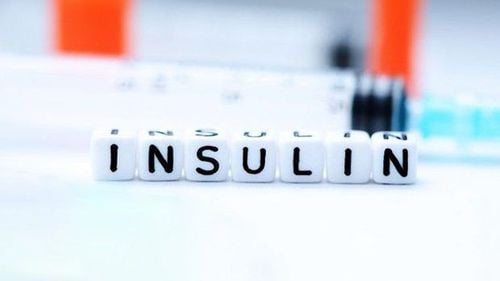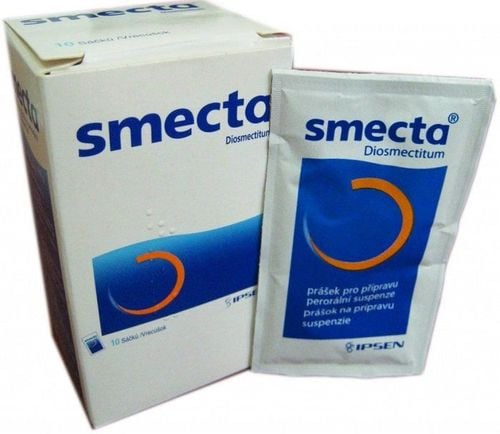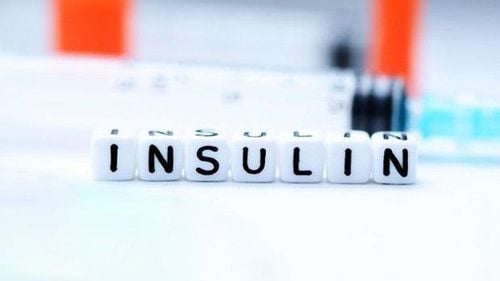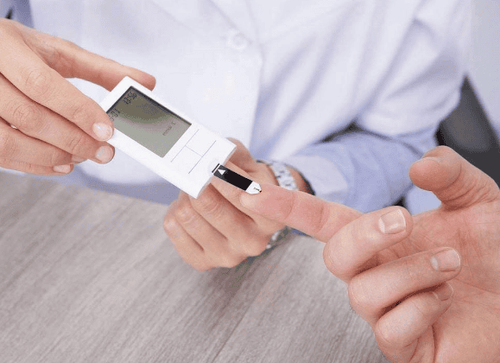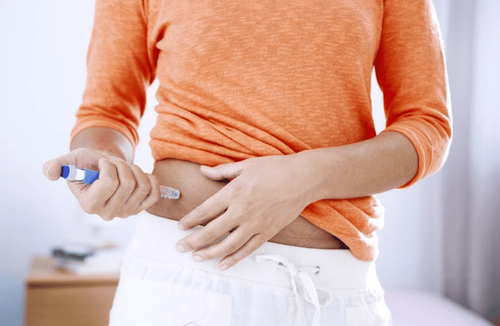This is an automatically translated article.
The article was professionally consulted with a doctor of the Department of Diseases & Internal Medicine, Vinmec Nha Trang International General Hospital.Currently, there are many methods and ways to treat diabetes. The most prominent of which is the use of super slow insulin (English name is Ultralente insulin), this is a form of insulin that takes longer to take effect, but the effect is long-lasting, helping certain people's situation. sick.
1. What is insulin?
Discovered in 1922, insulin has made a new step in the treatment of diabetes mellitus (DM). Insulin is a hormone produced by beta cells in the pancreas that helps the body use sugar for energy. With its properties, insulin is often used in cases of deficiency or decreased insulin secretion associated with type 1 diabetes and advanced type 2 diabetes.The insulin requirement in a normal person is 0.7 - 0.8 units/kg/24 hours. Insulin is inherently a protein, so if taken orally, it will be broken down, so it must be administered by injection. So far, oral insulin and inhalation aerosol are still in the experimental phase.
Ultra-slow insulin (Ultralente insulin) is a very slow-acting insulin-zinc suspension, appearing 4-6 hours after injection, lasting for 25-36 hours, peaking at 8-14 hours. after injection. Advantage: Just 1 injection will give effect 24 hours. Cons (rare): redness, swelling, pain at the injection site. Due to the prolonged effect, it is difficult to calculate the dose). Long-acting slow-acting insulins include Lantus and Humulin.
2. Undesirable effects
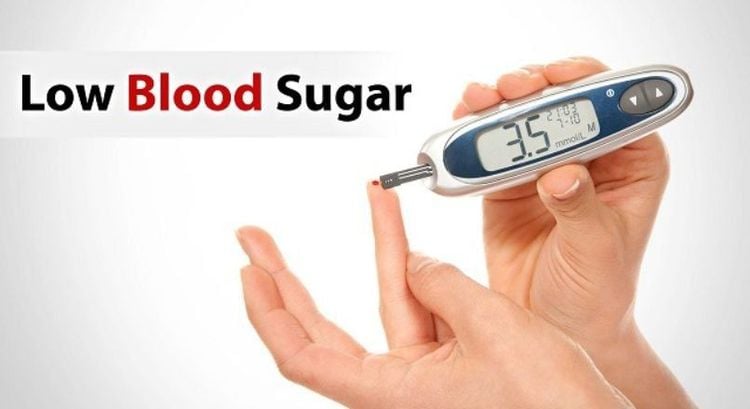
Hạ glucose huyết là biến chứng thường gặp nhất khi tiêm insulin
2.1. Hypoglycemia Hypoglycemia is the most common complication of insulin injections. It can be encountered in the following cases: Overdosing on insulin, skipping meals or eating late after insulin injection, exercising a lot...
The most obvious symptoms of hypoglycemia include: hunger, restlessness, dizziness, sweating, cold hands and feet. When blood glucose drops to about 54mg/dL (3mmol/L) patients often have symptoms of hypersympathetic (palpitations, tachycardia, sweating, chills) and parasympathetic (hunger, nausea). If these symptoms are not recognized and treated promptly, causing blood glucose to fall below 50 mg/dL (2.8 mmol/L), additional neurological symptoms such as restlessness, confusion, blurred vision, fatigue, headache, difficulty speaking. A further drop in blood glucose can lead to convulsions and coma.
When the patient has symptoms of hypoglycemia, it is necessary to quickly use a capillary blood glucose meter (if there is a blood glucose meter), quickly eat 1-2 sugar tablets (or 1 piece of cake or 1 glass of milk. ..)
Prevention:
Patients, family members, caregivers need to learn to recognize the symptoms of hypoglycemia and avoid situations that may cause hypoglycemia. Intensive insulin should be avoided in the following cases: inability to self-monitor blood glucose, eg the elderly, lack of a glucose meter, mental disorders, multiple comorbidities, severe complications (chronic renal failure) end stage, cerebrovascular accident...) 2.2. The Somogyi phenomenon (reactive hyperglycemia) Also known as the “rebound effect,” it occurs when blood glucose levels move rapidly from a very low level to a very high level. This phenomenon can occur at any time of the day, but usually occurs in the middle of the night and fasting morning blood glucose is found to be high. May be mistaken for missing insulin dose.
If blood glucose measurement is indicated in the middle of the night, there may be times when blood glucose drops in the Somogyi phenomenon (eg, 3 am blood glucose 40 mg/dL (2.22 mmol/L), 6 am 400 mg/dL (22.2 mmol/L) It is necessary to reduce the dose of insulin when this occurs.
In addition, it may be due to insulin overdose. At the time of insulin overdose, it leads to hypoglycaemia, causing the release of many counterregulatory hormones ( catecholamines, glucagon ...) cause reactive hyperglycemia
2.3. Insulin allergy Insulin allergy is divided into 2 types: local reactions and systemic reactions
Local reactions: redness, itching, pain, stiffness or lipoma at the injection site To avoid this side effect, the injection site should be changed frequently and the injections spaced 3-4cm (or 2-3 knuckles) apart. may be related to other factors such as: due to irritating antiseptic, too shallow injection, allergy to preservatives Systemic reactions: Nowadays, insulin allergy is very rare if using this type recombinant human insulin .
2.4. Lipid dystrophy (proliferation or atrophy of subcutaneous fat) The risk of lipid dystrophy in patients can be reduced by frequently changing the injection site.
2.5. Weight gain Insulin can cause weight gain by stimulating anabolism.

Insulin có thể gây tăng cân do kích thích quá trình đồng hóa
3. Drug interactions
Insulin can cause the following drug interactions:3.1. Risk of hypoglycemia The risk of hypoglycaemia may be increased when insulin is used concurrently with the following drugs:
ACE inhibitors. Aspirin and other salicylic acid drugs, especially in high doses. Ethyl alcohol: should not be used concurrently with insulin because of the high risk of hypoglycaemia. Do not use alcoholic beverages and alcoholic drugs. Beta-blockers, especially those that are not cardioselective, such as propranolol, because these drugs themselves also cause hypoglycemia. In addition, beta-blockers also mask the autonomic nervous system reactions in hypoglycemia: tachycardia, sweating, palpitations... When necessary in combination with other drugs on the same insulin, Patients should pay attention to strengthen blood glucose monitoring.
3.2. Risk of hyperglycemia Drugs that can cause hyperglycemia:
Chlorpromazine (nerve sedative): when used in high doses, it can cause hyperglycemia. Danazol: used together with insulin because it can cause hyperglycemia and ketoacidosis. Drugs containing excipients are sugar (sacrose, lactose...). High-dose progesterone hormones. Glucocorticoids. Beta 2 stimulants (terbutaline, salbutamol...). Thiazide diuretics and loop diuretics. For these cases, patients need to pay special attention to enhance blood glucose and urine glucose monitoring to adjust insulin dose accordingly.
4. Method of preservation
Unopened insulin should be stored in the refrigerator, not in the freezer because it can change insulin activity. Therefore, it is necessary to place a thermometer in the refrigerator to control the temperature. Best kept at 2-80C will keep until the expiry dateUsed insulin vials need to be stored at room temperature, away from high temperature and light to ensure that when insulin is injected, the temperature will be close to body temperature, helps relieve pain and regulates diffusion under the skin. The shelf life of an opened vial of insulin should not exceed 28 days.
Please dial HOTLINE for more information or register for an appointment HERE. Download MyVinmec app to make appointments faster and to manage your bookings easily.




